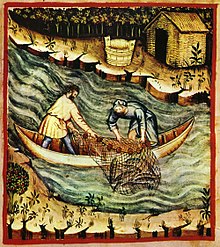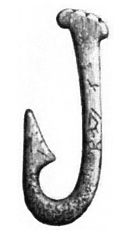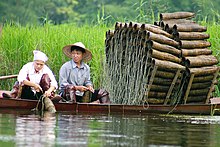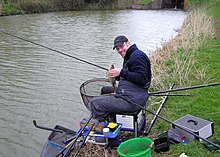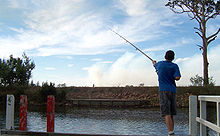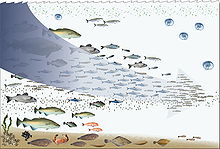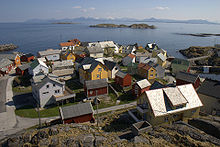KLASIFIKASI JENIS ALAT TANGKAP IKAN DI INDONESIA
¤ pukat kantong (seine net) : pukat ikan,pukat udang (shrimp
trawler),dogol,pukat pantai,pukat cincin (purse seine),dll
trawler),dogol,pukat pantai,pukat cincin (purse seine),dll
¤ jaring insang (gill nets) : jaring insang hanyut,jaring insang
lingkar,jaring insang tetap,jaring klitik,trammel net.
lingkar,jaring insang tetap,jaring klitik,trammel net.
¤ jaring angkat (lift net) : bagan perahu,bagan tancap,serok,dll.
¤ pancing (hook & lines) : rawai tuna(tuna long line),rawai
hanyut,rawai tetap,huhate (pole & line),pancing tonda,dll
¤ pancing (hook & lines) : rawai tuna(tuna long line),rawai
hanyut,rawai tetap,huhate (pole & line),pancing tonda,dll
¤ perangkap (traps) : sero,jermal,bubu,dll
¤ lain – lain alat : muroami,alat pengumpul kerang,alat pengumpul
laut,tombak,dll
[1] PUKAT IKAN (FISH NET)
Definisi : jenis penangkap ikan berbentuk kantong bersayap yang dalam
operasinya dilengkapi (2 buah) papan pembuka mulut (otter
board),tujuan utamanya untuk menangkap ikan perairan pertengahan (mid
water) dan ikan perairan dasar (demersal) yang dalam pengoperasiannya
ditarik melayang di atas dasar hanya oleh satu buah kapal bermotor
-DASAR HUKUM OPERASI-
1.PASAL 31 ayat (1) huruf d.Keputusan menteri kelautan dan perikanan
no.KEP.60/MEN/2001 Tentang penataan penggunaan kapal perikanan di ZEE
indonesia;
2. PASAL 16 ayat (1) huruf c. Keputusan menteri kelautan dan perikanan
no.KEP.10/MEN/2003 tentang perizinan usaha penangkapan ikan
-DAERAH OPERASI-
Pukat diizinkan beroperasi di wilayah ZEEI laut cina selatan,ZEEI laut
arafura,ZEEI Samudera hindia,dan ZEEI selat malaka.
[2] PUKAT UDANG
Definisi : jaring berbentuk kantong dengan sasaran tangkapannya udang.
Jaring dilengkapi sepasang papan pembuka mulut jaring dan Turtle
Exchuder Device/TED (alat pemisah/untuk meloloskan penyu),tujuan
utamanya untuk menangkap udang dan ikan dasar,dengan cara menyapu
dasar perairan dan hanya boleh ditarik oleh satu kapal
-DASAR HUKUM OPERASI-
1.PASAL 1 keppres RI no.85 tahun 1982 tentang pengunaan pukat
udang,dengan tidak mengurangi ketentuan keppres no.39 tahun 1980 dan
instruksi presiden no.11 tahun 1982,pukat udang dapat di gunakan di
perairan kep.kei,tanimbar,aru,papua,dan laut arafura dengan batas
koordinat 130′ BT ke timur,kecuali pantai masing-masing pulau yang
dibatasi oleh garis isobat 10 meter;
2. Pasal 31 ayat 1 huruf g. Keputusan menteri kelautan dan perikanan
no.KEP.60/MEN/2001 Tentang penataan penggunaan kapal perikanan di ZEEI
3. Pasal 16 ayat 1 huruf d. Keputusan menteri kelautan dan perikanan
no. KEP.10/MEN/2003 tentang perizinan usaha penangkapan ikan.
-JENIS IKAN HASIL TANGKAPAN-
udang putih(P.indicus,P.merguiensis),udang krosok(metapenolopsis Sp.)
udang bago(P.monodon) dan jenis ikan lain seperti pethek(Leugnatus
Sp.) kuniran (upeneaus Sp).
laut,tombak,dll
[1] PUKAT IKAN (FISH NET)
Definisi : jenis penangkap ikan berbentuk kantong bersayap yang dalam
operasinya dilengkapi (2 buah) papan pembuka mulut (otter
board),tujuan utamanya untuk menangkap ikan perairan pertengahan (mid
water) dan ikan perairan dasar (demersal) yang dalam pengoperasiannya
ditarik melayang di atas dasar hanya oleh satu buah kapal bermotor
-DASAR HUKUM OPERASI-
1.PASAL 31 ayat (1) huruf d.Keputusan menteri kelautan dan perikanan
no.KEP.60/MEN/2001 Tentang penataan penggunaan kapal perikanan di ZEE
indonesia;
2. PASAL 16 ayat (1) huruf c. Keputusan menteri kelautan dan perikanan
no.KEP.10/MEN/2003 tentang perizinan usaha penangkapan ikan
-DAERAH OPERASI-
Pukat diizinkan beroperasi di wilayah ZEEI laut cina selatan,ZEEI laut
arafura,ZEEI Samudera hindia,dan ZEEI selat malaka.
[2] PUKAT UDANG
Definisi : jaring berbentuk kantong dengan sasaran tangkapannya udang.
Jaring dilengkapi sepasang papan pembuka mulut jaring dan Turtle
Exchuder Device/TED (alat pemisah/untuk meloloskan penyu),tujuan
utamanya untuk menangkap udang dan ikan dasar,dengan cara menyapu
dasar perairan dan hanya boleh ditarik oleh satu kapal
-DASAR HUKUM OPERASI-
1.PASAL 1 keppres RI no.85 tahun 1982 tentang pengunaan pukat
udang,dengan tidak mengurangi ketentuan keppres no.39 tahun 1980 dan
instruksi presiden no.11 tahun 1982,pukat udang dapat di gunakan di
perairan kep.kei,tanimbar,aru,papua,dan laut arafura dengan batas
koordinat 130′ BT ke timur,kecuali pantai masing-masing pulau yang
dibatasi oleh garis isobat 10 meter;
2. Pasal 31 ayat 1 huruf g. Keputusan menteri kelautan dan perikanan
no.KEP.60/MEN/2001 Tentang penataan penggunaan kapal perikanan di ZEEI
3. Pasal 16 ayat 1 huruf d. Keputusan menteri kelautan dan perikanan
no. KEP.10/MEN/2003 tentang perizinan usaha penangkapan ikan.
-JENIS IKAN HASIL TANGKAPAN-
udang putih(P.indicus,P.merguiensis),udang krosok(metapenolopsis Sp.)
udang bago(P.monodon) dan jenis ikan lain seperti pethek(Leugnatus
Sp.) kuniran (upeneaus Sp).
[3]PUKAT CINCIN (PURSE SEINE)
Definisi : jaring penangkap ikan berbentuk empat persegi
panjang/trapesium,dilengkapi dengan tali kolor yang dilewatkan melalui
cincin yang diikatkan pada bagian bawah jaring (tali ris
bawah),sehingga dengan menarik tali itu jaring dapat dikuncupkan
sehingga gerombolan ikan terkurung di dalam jaring.
-DASAR HUKUM OPERASI-
1.pasal 31 ayat 1 huruf b dan huruf c, kep.menteri kelautan dan
perikan KEP.60/MEN/2001
2. Pasal 16 ayat 1 huruf c, KepMen KEP.10/MEN/2003
-DAERAH OPERASI-
Perairan ZEEI Laut sulawesi,ZEEI samudera pasific,ZEEI samudera hindia
-HASIL TANGKAPAN-
pelagis kecil(kembung,selar,lemuru,dan ikan lainnya),pelagis besar
(cakalang,tuna dan jenis lainnya)
Definisi : jaring penangkap ikan berbentuk empat persegi
panjang/trapesium,dilengkapi dengan tali kolor yang dilewatkan melalui
cincin yang diikatkan pada bagian bawah jaring (tali ris
bawah),sehingga dengan menarik tali itu jaring dapat dikuncupkan
sehingga gerombolan ikan terkurung di dalam jaring.
-DASAR HUKUM OPERASI-
1.pasal 31 ayat 1 huruf b dan huruf c, kep.menteri kelautan dan
perikan KEP.60/MEN/2001
2. Pasal 16 ayat 1 huruf c, KepMen KEP.10/MEN/2003
-DAERAH OPERASI-
Perairan ZEEI Laut sulawesi,ZEEI samudera pasific,ZEEI samudera hindia
-HASIL TANGKAPAN-
pelagis kecil(kembung,selar,lemuru,dan ikan lainnya),pelagis besar
(cakalang,tuna dan jenis lainnya)
[4] JARING INSANG (GILL NET)
Definisi : alat tangkap ikan berupa lembaran jaring 4 persegi
panjajng,pada bagian atasnya dilengkapi tali ris dan pelampung sedang
kan bagian bawah di lengkapi tali ris dan pemberat terbuat dari
coplymers PVD,dioperasikan di lapisan permukaan,pertengahan,atau dasar
-HUKUM OPERASI-
1. Pasal 31 ayat 1 huruf 3, No. KEP.60/MEN/2001
2. Pasal 16 ayat 1 huruf e. no. KEP.10/MEN/2003
-DAERAH OPERASI-
Hampir digunakan di seluruh perairan indonesia
-HASIL TANGKAPAN-
Jenis ikan pelagis, untuk gill-net dasar hasilnya jenis ikan demersal
Definisi : alat tangkap ikan berupa lembaran jaring 4 persegi
panjajng,pada bagian atasnya dilengkapi tali ris dan pelampung sedang
kan bagian bawah di lengkapi tali ris dan pemberat terbuat dari
coplymers PVD,dioperasikan di lapisan permukaan,pertengahan,atau dasar
-HUKUM OPERASI-
1. Pasal 31 ayat 1 huruf 3, No. KEP.60/MEN/2001
2. Pasal 16 ayat 1 huruf e. no. KEP.10/MEN/2003
-DAERAH OPERASI-
Hampir digunakan di seluruh perairan indonesia
-HASIL TANGKAPAN-
Jenis ikan pelagis, untuk gill-net dasar hasilnya jenis ikan demersal
[5] TUNA LONG LINE (RAWAI TUNA)
Definisi : alat tangkap ikan yang di operasikan secara horizontal di
lapisan permukaan laut (50-400 meter),terdiri atas tali utama (main
line) yang pada jarak tertentu di gantungkan tali cabang (brench line)
yang ujung tali cabang di ikatkan pancing,tiap 5-15 tali cabang
dilengkapi pelampung
-DASAR HUKUM OPERASI-
1. Pasal 31 ayat 1 huruf a. Kep menteri DKP nomor kep.60/MEN/2001
2. Pasal 16 ayat 1 huruf a. Kep menteri DKP nomor KEP.10/MEN/2003
-DAERAH OPERASI-
Diizinkan beroperasi di wilayah ZEEI Samudera hindia,ZEEI laut
sulawesi,ZEEI samudera pasifik.
-HASIL TANGKAPAN-
Tuna setuhuk hitam,setuhuk putih,alu-alu,layaran,ikan pedang,lemadang dan cucut
Definisi : alat tangkap ikan yang di operasikan secara horizontal di
lapisan permukaan laut (50-400 meter),terdiri atas tali utama (main
line) yang pada jarak tertentu di gantungkan tali cabang (brench line)
yang ujung tali cabang di ikatkan pancing,tiap 5-15 tali cabang
dilengkapi pelampung
-DASAR HUKUM OPERASI-
1. Pasal 31 ayat 1 huruf a. Kep menteri DKP nomor kep.60/MEN/2001
2. Pasal 16 ayat 1 huruf a. Kep menteri DKP nomor KEP.10/MEN/2003
-DAERAH OPERASI-
Diizinkan beroperasi di wilayah ZEEI Samudera hindia,ZEEI laut
sulawesi,ZEEI samudera pasifik.
-HASIL TANGKAPAN-
Tuna setuhuk hitam,setuhuk putih,alu-alu,layaran,ikan pedang,lemadang dan cucut
[6] HUHATE (POLE AND LINE)
Definisi : jenis alat pancing penangkap ikan yang terdiri bambo
sebagai joran/tongkat dan tali sebagai tali pancing. Pada tali pancing
ini dikaitkan mata pancing yang tidak berkait. Penggunaan mata pancing
yang tidak berkait dimaksudkan agar ikan dapat mudah lepas
-DASAR HUKUM OPERASI-
1. Pasal 8 ayat 2 huruf a. Dan ayat 3 Peraturan pemerintah RI No.54
tahun 2002 tentang usaha perikanan
-DAERAH OPERASI-
ZEEI Laut sulawesi dan ZEEI samudera pasifik
-HASIL TANGKAPAN-
Ikan cakalang
Definisi : jenis alat pancing penangkap ikan yang terdiri bambo
sebagai joran/tongkat dan tali sebagai tali pancing. Pada tali pancing
ini dikaitkan mata pancing yang tidak berkait. Penggunaan mata pancing
yang tidak berkait dimaksudkan agar ikan dapat mudah lepas
-DASAR HUKUM OPERASI-
1. Pasal 8 ayat 2 huruf a. Dan ayat 3 Peraturan pemerintah RI No.54
tahun 2002 tentang usaha perikanan
-DAERAH OPERASI-
ZEEI Laut sulawesi dan ZEEI samudera pasifik
-HASIL TANGKAPAN-
Ikan cakalang
[7] PANCING RAWAI DASAR
Definisi : mempunyai mata pancing yang banyak yang digantungkan pada
suatu tali yang panjang melalui tali penghubung yang disebut tali
cabang,agar mata pancing dapat berada disekitar dasar perairan secara
menetap maka dilengkapi pemberat dan pelampung pada posisi dan
kedalaman tertentu.tali cabang relatif pendek(5-10 m),dengan itu tali
pelampung dibuat relatif panjang
-DASAR HUKUM OPERASI-
1. Pasal 8 ayat 2 huruf b. Dan ayat 3 Peraturan Pemerintah RI no.54
tahun 2002 tentang usaha perikanan
-DAERAH OPERASI-
Pada semua wilayah perairan teritorial indonesia,dan wilayah
operasinya pada jalur I, II,dan III
-HASIL TANGKAPAN-
Ikan pelagis kecil dan sedang,serta ikan yang hidup di dasar.
Definisi : mempunyai mata pancing yang banyak yang digantungkan pada
suatu tali yang panjang melalui tali penghubung yang disebut tali
cabang,agar mata pancing dapat berada disekitar dasar perairan secara
menetap maka dilengkapi pemberat dan pelampung pada posisi dan
kedalaman tertentu.tali cabang relatif pendek(5-10 m),dengan itu tali
pelampung dibuat relatif panjang
-DASAR HUKUM OPERASI-
1. Pasal 8 ayat 2 huruf b. Dan ayat 3 Peraturan Pemerintah RI no.54
tahun 2002 tentang usaha perikanan
-DAERAH OPERASI-
Pada semua wilayah perairan teritorial indonesia,dan wilayah
operasinya pada jalur I, II,dan III
-HASIL TANGKAPAN-
Ikan pelagis kecil dan sedang,serta ikan yang hidup di dasar.
[8] SQUID JIGGER (PANCING CUMI)
Definisg : pancing ulur yang terdiri dari banyak mata pancing yang
disusun menyerupai jangkar. Pada beberapa sentimeter diatas mata
pancing di ikatkan umpan,pancing ini khusus untuk menangkap
cumi-cumi,dalam pengoperasiannya menggunakan perahu/kapal dilengkapi
lampu sebagai penghimpun bawanan ikan
-DASAR HUKUM OPERASI-
1. Pasal 31 ayat 1 huruf f. Kep menteri DKP Nomor. KEP.60/MEN/2001
2. Pasal 16 ayat 1 huruf f. Kep menteri DKP nomor KEP.10/MEN/2003
-DAERAH OPERASI-
diseluruh laut wilayah dan ZEEI
-HASIL TANGKAPAN-
Cumi-cumi,kembung,tondipang,selar,kuwe,malalugis.dll
[9] PAYANG
Definisi : alat tangkap yang terbuat dari bahan jaring yang konstruksi
nya terdiri dari kantong,badan,dan sayap,serta dilengkapi
pelampaung,pemberat dan tali penarik(salambar). Alat tangkap digunakan
untuk menangkap ikan pelagis besar maupun kecil
(sesuai FAO,alat tangkap ikan ini di golongkan jaring lingkar dengan
kode 01.2.0 (01=kode jaring lingkar 2.0=kode tanpa tali kerut)
-DASAR HUKUM OPERASI-
1. Pasal 8 ayat 2 huruf b. Dan ayat 3 Peraturan Pemerintah RI no.54
tahun 2002 tentang usaha perikanan
-DAERAH OPERASI-
di perairan teritorial pada jalur I,dan II
-HASIL TANGKAPAN-
Ikan cakalang,tongkol,tuna,dan kembung,serta menangkap Teri
Definisg : pancing ulur yang terdiri dari banyak mata pancing yang
disusun menyerupai jangkar. Pada beberapa sentimeter diatas mata
pancing di ikatkan umpan,pancing ini khusus untuk menangkap
cumi-cumi,dalam pengoperasiannya menggunakan perahu/kapal dilengkapi
lampu sebagai penghimpun bawanan ikan
-DASAR HUKUM OPERASI-
1. Pasal 31 ayat 1 huruf f. Kep menteri DKP Nomor. KEP.60/MEN/2001
2. Pasal 16 ayat 1 huruf f. Kep menteri DKP nomor KEP.10/MEN/2003
-DAERAH OPERASI-
diseluruh laut wilayah dan ZEEI
-HASIL TANGKAPAN-
Cumi-cumi,kembung,tondipang,selar,kuwe,malalugis.dll
[9] PAYANG
Definisi : alat tangkap yang terbuat dari bahan jaring yang konstruksi
nya terdiri dari kantong,badan,dan sayap,serta dilengkapi
pelampaung,pemberat dan tali penarik(salambar). Alat tangkap digunakan
untuk menangkap ikan pelagis besar maupun kecil
(sesuai FAO,alat tangkap ikan ini di golongkan jaring lingkar dengan
kode 01.2.0 (01=kode jaring lingkar 2.0=kode tanpa tali kerut)
-DASAR HUKUM OPERASI-
1. Pasal 8 ayat 2 huruf b. Dan ayat 3 Peraturan Pemerintah RI no.54
tahun 2002 tentang usaha perikanan
-DAERAH OPERASI-
di perairan teritorial pada jalur I,dan II
-HASIL TANGKAPAN-
Ikan cakalang,tongkol,tuna,dan kembung,serta menangkap Teri
[10] BOUKE AMI
Definisi : alat tangkap berbentuk jaring persegi empat (8-12 m) yang
pengoperasiannya dilakukan dengan menurunkan dan mengangkat secara
vertikal dari sisi kapal. Dalam pengoperasiannya menggunakan alat
bantu lampu sebagai pengumpul gerombolan ikan. Tujuan menangkap
ikan-ikan fototaksis positip
-DASAR HUKUM OPERASI-
1. Pasal 8 ayat 2 huruf b. dan ayat 3 Peraturan Pemerintah RI No.54
tahun 2002 tentang usaha perikanan
-DAERAH OPERASI-
Di wilayah perairan tertentu
Definisi : alat tangkap berbentuk jaring persegi empat (8-12 m) yang
pengoperasiannya dilakukan dengan menurunkan dan mengangkat secara
vertikal dari sisi kapal. Dalam pengoperasiannya menggunakan alat
bantu lampu sebagai pengumpul gerombolan ikan. Tujuan menangkap
ikan-ikan fototaksis positip
-DASAR HUKUM OPERASI-
1. Pasal 8 ayat 2 huruf b. dan ayat 3 Peraturan Pemerintah RI No.54
tahun 2002 tentang usaha perikanan
-DAERAH OPERASI-
Di wilayah perairan tertentu
[11] BUBU (PORTABLE TRAPS)
Definisi : perangkap untuk menangkap ikan. Bubu mempunyai pintu dan
badan yang dirancang sedemikian rupa sehing bila ikan masuk kedalam
bubu melalui pintu tidak akan dapat keluar lagi.
Definisi : perangkap untuk menangkap ikan. Bubu mempunyai pintu dan
badan yang dirancang sedemikian rupa sehing bila ikan masuk kedalam
bubu melalui pintu tidak akan dapat keluar lagi.
(alat tangkap ini digolongkan menjadi bubu dasar,bubu apung/hanyut.
Berdasarkan desain dan konstruksi serta operasinya bubu di golongkan
ke dalam perangkap dengan kode ISSCFG 08.2.0 (08=kode perangkap
2.0=kode terapung))
-DASAR HUKUM OPERASI-
1. Pasal 8 ayat 2 huruf b. dan ayat 3 Peraturan Pemerintah RI No.54
tahun 2002 tentang usaha perikanan.
-DAERAH OPERASI-
Di perairan teritorial dan ZEEI samudera hindia,ZEEI laut sulawesi,dan
ZEEI Samudera pasifik
Berdasarkan desain dan konstruksi serta operasinya bubu di golongkan
ke dalam perangkap dengan kode ISSCFG 08.2.0 (08=kode perangkap
2.0=kode terapung))
-DASAR HUKUM OPERASI-
1. Pasal 8 ayat 2 huruf b. dan ayat 3 Peraturan Pemerintah RI No.54
tahun 2002 tentang usaha perikanan.
-DAERAH OPERASI-
Di perairan teritorial dan ZEEI samudera hindia,ZEEI laut sulawesi,dan
ZEEI Samudera pasifik
[12] ALAT TANGKAP LONG BAG SET NET (LBSN)
definisi : alat tangkap termasuk kedalam jaring kantong. LBSN (pukat
apung) terdiri dari 2 jenis : pukat apung biasa dan pukat apung teri.
Pembedaan nama pukat ini hanya didasarkan tujuan penangkapan. Dilihat
dari desain,kapal,dan perlengkapan pendukung tidak mempunyai perbedaan
yang mencolok.
-DAERAH OPERASI-
LBSN digunakan di perairan sebelah barat sumatera dengan komiditi ikan
mesopelagis, dan umumnya di pakai di jalur I, pengoperasian di tarik
dengan alat bantu gardan
-STRUKTUR LBSN-
a. Sayap
b. Kepala jaring
c. Badan jaring
d. Kantong
apung) terdiri dari 2 jenis : pukat apung biasa dan pukat apung teri.
Pembedaan nama pukat ini hanya didasarkan tujuan penangkapan. Dilihat
dari desain,kapal,dan perlengkapan pendukung tidak mempunyai perbedaan
yang mencolok.
-DAERAH OPERASI-
LBSN digunakan di perairan sebelah barat sumatera dengan komiditi ikan
mesopelagis, dan umumnya di pakai di jalur I, pengoperasian di tarik
dengan alat bantu gardan
-STRUKTUR LBSN-
a. Sayap
b. Kepala jaring
c. Badan jaring










